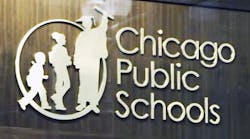The pervasive financial difficulties that have besieged thousands of schools and universities for several budget cycles have forced administrators to look deeper and harder for places where they can find savings and minimize the damage done to educational quality.
The federal stimulus funds approved in 2009 have helped schools and universities survive difficult financial patches in the short term, but those funds are drying up, and the economy still hasn't rebounded sufficiently to pull education institutions out of fiscal distress.
Many of the steps schools and universities have taken in the past to trim expenses already have been carried out, and some actions no longer may have enough impact to make a dent in the deficits administrators must address. More and more institutions are looking at cost reductions that may disrupt communities and undermine student success: laying off employees, eliminating programs, shutting down facilities.
Here are 10 ways education institutions are coping with budget woes:
1. Consolidation
Leaders in many states view school district consolidation as an area where money can be saved by eliminating duplicated teaching, administrative and classified positions. Lawmakers often have tried to encourage school district consolidations, but the opposition from those communities that would lose their autonomy has made it a difficult proposal to pursue.
Some states have large countywide systems (and Hawaii has one statewide district), and many districts have been unified into larger entities over the years. But in other states, tiny systems with small numbers of students continue to operate. Federal statistics from 2008-09 show that more than 8,700 school districts had fewer than 1,000 students; and of those, 5,990 districts had fewer than 500 students.
A legislative audit earlier this year in Kansas suggested that consolidating some of the state's 293 districts could result in savings from $15 million to $129 million. A 2010 Brookings Institution report recommended that Ohio eliminate about a third of its 611 districts through consolidation. A Michigan State University study projected that if the 550 districts in that state were reconfigured along county lines, the state would save as much as $612 million a year.
2. Class size
Education reformers have for many years embraced — and some studies have provided evidence for — the premise that having fewer students in a class will lead to better student performance. But committing to smaller classes means hiring more teachers for the additional classrooms needed.
As budgets shrink, some are questioning whether having small classes is the most efficient way to allocate scarce education dollars. Former Microsoft chairman Bill Gates, whose foundation has poured millions into education reform, says class-size reduction is too expensive.
"One of the most expensive assumptions embedded in school budgets is the belief that reducing class sizes improves student achievement," Gates said in a speech last month to the Council of Chief State School Officers. "This has driven school budget increases for more than 50 years. We've gone from a student-teacher ratio of 26:1 in 1960 to 15:1 today. But smaller class sizes have not correlated with rising achievement. California spent $20 billion reducing class sizes, and student achievement did not change."
Gates suggests money saved by raising class sizes could be redirected to pay for high-quality teachers that are able to lead larger classes.
In Florida, many administrators and government officials were hoping that voters in the state would approve a change in the law that mandates class sizes and give school systems more flexibility in how many students are permitted in each classroom. But voters decided to keep the strict mandates for class size in place.
3. Layoffs
Salaries and benefits are the largest expense in an education institution's operating budget, so when sizable cuts are required, many begin looking at layoffs. In many cases last year, states were able to avoid school layoffs because of stimulus funds from the federal Recovery Act. But without that money, states and the education institutions they support are facing a "funding cliff" that could send institutions plummeting into a financial abyss.
In the Los Angeles district, the nation's second largest, layoffs have begun. The system has eliminated the jobs of more than 1,000 classified employees at the start of December. In North Carolina, state budget officials asked the office of public instruction to project the effect of statewide cuts of as much as 10 percent. Officials estimate such a reduction would result in 5,300 teacher layoffs, as well as 13,000 teaching assistants.
In higher education, the University of Phoenix, a for-profit, mostly online institution, announced that in anticipation of a large decline in student enrollment, it is laying off about 700 employees, mostly people working in admissions.
4. Closings
Shutting down a school can be devastating to a community, but many education institutions are finding that their financial condition is so dire that closing a facility is the only way to make the spending cuts necessary to balance a budget. Some institutions that have put off difficult closing decisions in the past have found themselves with underutilized buildings that they no longer can afford to operate.
Many schools are closing or considering closing numerous campuses. The Roman Catholic Archdiocese of New York has proposed closing 31 elementary schools and a high school next year; the Charlotte-Mecklenburg (N.C.) board has voted to close 10 schools.
Closing campuses enables institutions to operate the facilities that remain open more efficiently. Education institutions also can get additional revenue by selling schools they no longer need. Earlier this year, the Detroit district, which has closed more than 150 buildings in the last decade, ended a longstanding policy and agreed to sell unused campuses to charter school operators. In the Kansas City (Mo.) district, which closed more than 20 schools earlier this year, officials also have indicated that they have dropped their reluctance to sell or lease empty schools to charter operators.
5. Fees
To bridge the gap between revenues and expenditures, many schools and universities charge fees to students. They may cover the costs of transportation, textbooks or other materials, specialized programs and activities, or athletics. Some college campuses have used a dedicated student fee to pay for construction of new facilities, such as a campus recreation center.
But the imposition of fees can be problematic for K-12 public schools, which are constitutionally mandated to provide a free education. Earlier this year, the Indiana attorney general issued a legal opinion that it was unconstitutional for school districts in the state to charge students for transporting them to and from school.
The proliferation of fees in general led the American Civil Liberties Union in September to file a class-action suit against the state of California in an effort to stop school systems from charging students such fees.
The ACLU says it has compiled examples of districts' requiring students to purchase required text and workbooks for academic courses, charging lab fees for science classes, charging material fees for fine-arts classes, and requiring students to purchase school-issued P.E. uniforms. Some schools charge students hundreds, and in some cases thousands, of dollars to participate in school-sponsored extracurricular activities, the ACLU says.
6. Advertising
For years, a debate has been going on over the appropriateness of allowing commercialism in schools. Those responsible for managing finances in an education institution see potential revenue streams from ads that could appear on scoreboards, buses, rooftops, or from awarding facility naming rights or other sponsorships.
But those concerned about the influence that commercialism can have on the impressionable minds of children have argued that the learning environment of a school campus should be free from the influence of those trying to push products for a profit.
"Advertising and marketing negatively influence children's self-esteem, body image, peer relations, and general well-being," says a report from the National Center for Education Policy on commercializing trends in schools.
In the current climate of dwindling budgets, the promise of additional revenue may persuade reluctant educators to support allowing ads in schools.
7. Outsourcing
For years, schools and universities have viewed outsourcing, especially for non-instructional areas such as food, custodial and transportation services, as a potential avenue for cutting costs and operating more efficiently. As the economic outlook has worsened in the last couple of years, education institutions may decide to take another look at outsourcing, even if means combating the opposition to such a change that is likely to come from current employees and the unions that represent them.
Education institutions that opt for outsourcing should make sure they have done their homework and can make a compelling case that handing over part of the institution's operations to a private entity actually will deliver on the promise of saving money.
The financially struggling Detroit district, which had about half of its bus service outsourced, decided earlier this year to privatize all of its student transportation. The school system projects that the new arrangement will save $8.1 million a year; in addition, selling the district-owned bus fleet will bring in $5.1 million, and eliminating future capital transportation costs will save $3.5 million.
8. Performance contracting
Many schools and universities don't have the funding to carry out needed improvements, even though many institutions could cut operating costs by upgrading to more efficient systems that use less energy and water. As more attention has been focused on green/sustainable schools, many education facilities could operate more efficiently with upgraded roofs, windows, HVAC systems, lighting and plumbing fixtures.
Energy companies have offered a service that enables education institutions to acquire new equipment without any upfront cost. With a performance contract, a company agrees to provide upgraded systems and equipment to a school or university and guarantees that the new system will reduce costs by a certain amount. The institution agrees to use the money saved from the more efficient system to pay the energy company.
9. Computerized maintenance management
When the budget ax falls in education institutions, the maintenance department typically is one of the first areas to absorb the impact. In the short term, cutting maintenance spares programs in the classroom more directly tied to student learning. But in the long run, a poorly maintained education facility can become a space that no longer provides a suitable climate for learning.
Economic difficulties make it more imperative for administrators to allocate their maintenance resources where they will do the most good. A computerized maintenance-management system enables schools and universities to carry out repairs and routine cleaning in a methodical way. Instead of a passive "squeaky wheel gets the grease" way of responding to repair requests, a school or university with a computerized maintenance-management system can keep accurate and easily accessible records on which equipment needs periodic maintenance or replacement, which areas need more cleaning attention, and which jobs should be given high priority.
10. Online purchasing
Technology also can help schools and universities acquire supplies and equipment more efficiently. Online purchasing programs enable education institutions to gain access to a wider pool of potential vendors, which can result in more competition and lower prices.
Conducting transactions over the Internet also can streamline what traditionally has been a paper-based bureaucracy that slowed down the purchasing process in education institutions as forms moved from office to office for approval. In a well-functioning online purchasing operation, bids are received and approved more quickly, and the needed products are delivered to campuses more expeditiously.
Online purchasing also makes it easier for schools and universities to take part in buying consortiums with other education institutions or government entities.
Kennedy, staff writer, can be reached at [email protected].



